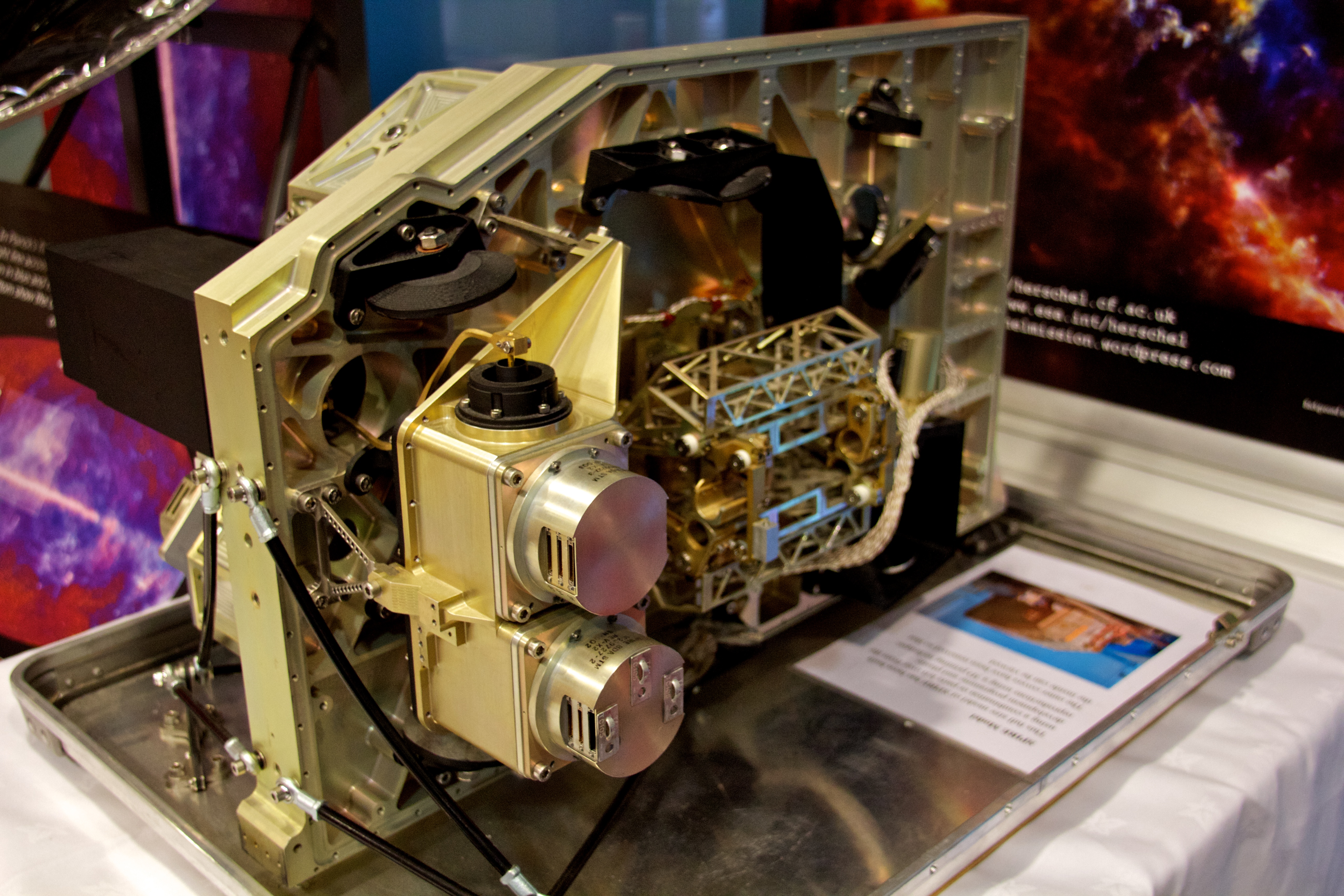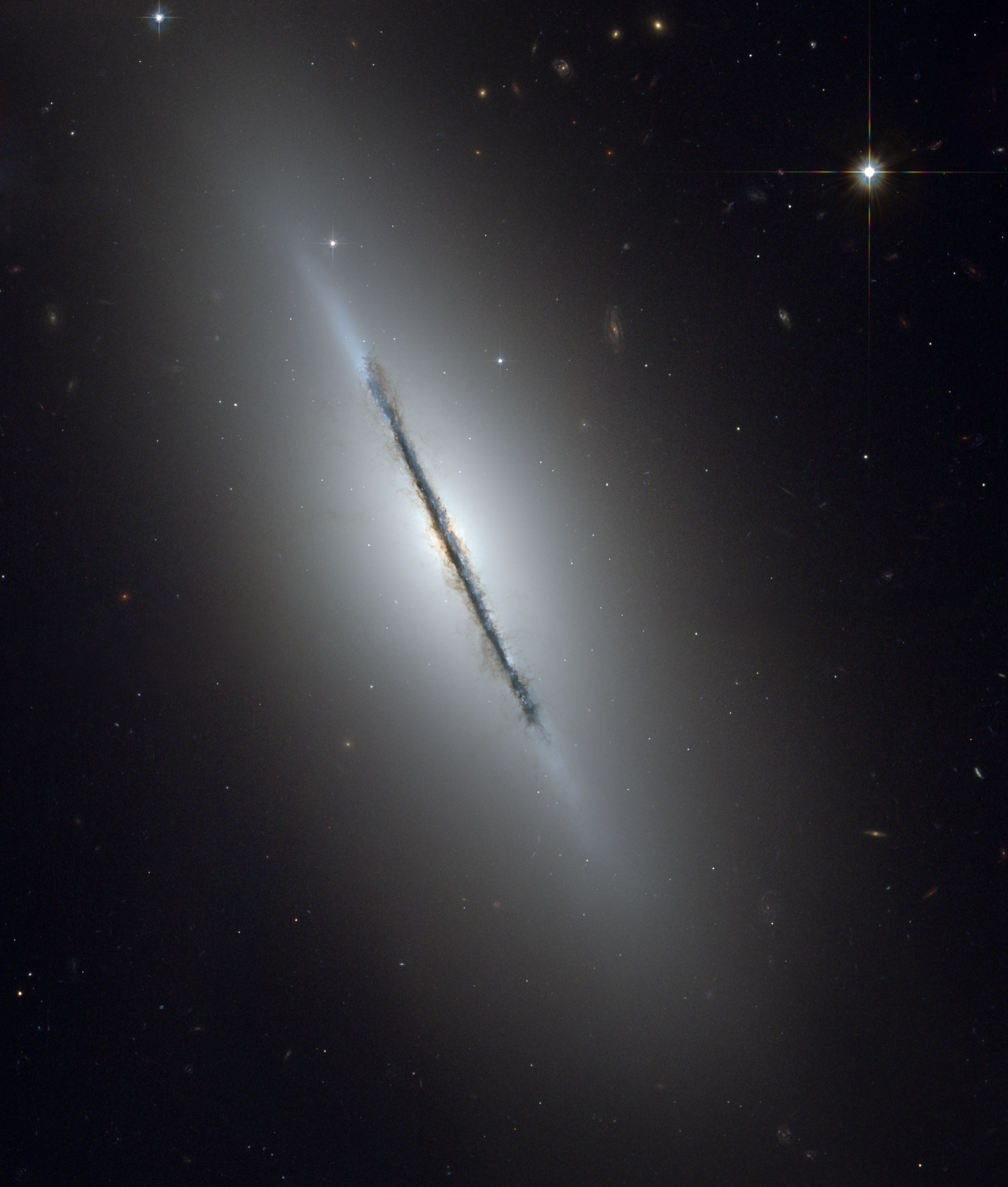|
NGC 1386
NGC 1386 is a spiral galaxy located in the constellation Eridanus. It is located at a distance of circa 53 million light years from Earth, which, given its apparent dimensions, means that NGC 1386 is about 50,000 light years across. It is a Seyfert galaxy, the only one in Fornax Cluster. Observation history NGC 1386 was discovered by Johann Friedrich Julius Schmidt on January 19, 1865. Julius Schmidt was then director of the National Observatory of Athens and he was inspecting the Cape catalogue nebulae with a 6 ft refractor. Along with NGC 1386, he also discovered the nearby galaxies NGC 1381, NGC 1382, NGC 1389, and NGC 1428. The publication of their discovery was delayed by 10 years and was published in 1876 with the work ''Über einige im Cape-Catalog fehlende Nebel''. Characteristics NGC 1386 is seen nearly edge-on and it has been classified both as a spiral and as a lenticular galaxy. It features a spiral pattern with dust lanes. No HII regions are visible in ... [...More Info...] [...Related Items...] OR: [Wikipedia] [Google] [Baidu] |
New General Catalogue
The ''New General Catalogue of Nebulae and Clusters of Stars'' (abbreviated NGC) is an astronomical catalogue of deep-sky objects compiled by John Louis Emil Dreyer in 1888. The NGC contains 7,840 objects, including galaxies, star clusters and emission nebulae. Dreyer published two supplements to the NGC in 1895 and 1908, known as the ''Index Catalogues'' (abbreviated IC), describing a further 5,386 astronomical objects. Thousands of these objects are best known by their NGC or IC numbers, which remain in widespread use. The NGC expanded and consolidated the cataloguing work of William and Caroline Herschel, and John Herschel's ''General Catalogue of Nebulae and Clusters of Stars''. Objects south of the celestial equator are catalogued somewhat less thoroughly, but many were included based on observation by John Herschel or James Dunlop. The NGC contained multiple errors, but attempts to eliminate them were made by the ''Revised New General Catalogue'' (RNGC) by Jack W. Sulent ... [...More Info...] [...Related Items...] OR: [Wikipedia] [Google] [Baidu] |
National Observatory Of Athens
The National Observatory of Athens (NOA; el, Εθνικό Αστεροσκοπείο Αθηνών) is a research institute in Athens, Greece. Founded in 1842, it is the oldest research foundation in Greece, as it was the first scientific research institute built after Greece became independent in 1829, and one of the oldest research institutes in Southern Europe. World-renowned Greek-Austrian astronomer Georgios Konstantinos Vouris lobbied to create the National Observatory of Athens in the newly founded state. He persuaded wealthy Greek-Austrian banker Georgios Sinas to pay for the new massive observatory. The Austrian-born Greek King found out the news and awarded Georgios Sinas's son the Order of the Redeemer. The King also selected the architects for the building under Georgios Konstantinos Vouris's supervision. He chose Eduard Schaubert and Theophil Hansen. History 1842: Foundation Greek-Austrian astronomer Georgios Konstantinos Vouris studied astronomy at the V ... [...More Info...] [...Related Items...] OR: [Wikipedia] [Google] [Baidu] |
Radio Waves
Radio waves are a type of electromagnetic radiation with the longest wavelengths in the electromagnetic spectrum, typically with frequencies of 300 gigahertz (GHz) and below. At 300 GHz, the corresponding wavelength is 1 mm (shorter than a grain of rice); at 30 Hz the corresponding wavelength is (longer than the radius of the Earth). Like all electromagnetic waves, radio waves in a vacuum travel at the speed of light, and in the Earth's atmosphere at a close, but slightly lower speed. Radio waves are generated by charged particles undergoing acceleration, such as time-varying electric currents. Naturally occurring radio waves are emitted by lightning and astronomical objects, and are part of the blackbody radiation emitted by all warm objects. Radio waves are generated artificially by an electronic device called a transmitter, which is connected to an antenna which radiates the waves. They are received by another antenna connected to a radio receiver, which p ... [...More Info...] [...Related Items...] OR: [Wikipedia] [Google] [Baidu] |
Velocity Dispersion
In astronomy, the velocity dispersion (''σ'') is the statistical dispersion of velocity, velocities about the Arithmetic mean, mean velocity for a group of astronomical objects, such as an open cluster, globular cluster, galaxy, galaxy cluster, or supercluster. By measuring the radial velocities of the group's members through astronomical spectroscopy, the velocity dispersion of that group can be estimated and used to derive the group's mass from the virial theorem.Collins Dictionary of Astronomy, 2nd Ed.; Harper Collins Publishers; 2000; pp. 444, 449 Radial velocity is found by measuring the Doppler broadening, Doppler width of spectral lines of a collection of objects; the more radial velocities one measures, the more accurately one knows their dispersion. A ''central velocity dispersion'' refers to the σ of the interior regions of an extended object, such as a galaxy or cluster. The relationship between velocity dispersion and matter (or the observed electromagnetic radiation ... [...More Info...] [...Related Items...] OR: [Wikipedia] [Google] [Baidu] |
Supermassive Black Hole
A supermassive black hole (SMBH or sometimes SBH) is the largest type of black hole, with its mass being on the order of hundreds of thousands, or millions to billions of times the mass of the Sun (). Black holes are a class of astronomical objects that have undergone gravitational collapse, leaving behind spheroidal regions of space from which nothing can escape, not even light. Observational evidence indicates that almost every large galaxy has a supermassive black hole at its Central massive object, center. For example, the Milky Way has a Galactic Center#Supermassive black hole, supermassive black hole in its Galactic Center, corresponding to the Astronomical radio source, radio source Sagittarius A*. Accretion (astrophysics), Accretion of Interstellar medium, interstellar gas onto supermassive black holes is the process responsible for powering Active galactic nucleus, active galactic nuclei (AGNs) and quasars. Two supermassive black holes have been directly imaged by the ... [...More Info...] [...Related Items...] OR: [Wikipedia] [Google] [Baidu] |
Accretion Disk
An accretion disk is a structure (often a circumstellar disk) formed by diffuse material in orbital motion around a massive central body. The central body is typically a star. Friction, uneven irradiance, magnetohydrodynamic effects, and other forces induce instabilities causing orbiting material in the disk to spiral inward towards the central body. Gravitational and frictional forces compress and raise the temperature of the material, causing the emission of electromagnetic radiation. The frequency range of that radiation depends on the central object's mass. Accretion disks of young stars and protostars radiate in the infrared; those around neutron stars and black holes in the X-ray part of the spectrum. The study of oscillation modes in accretion disks is referred to as diskoseismology. Manifestations Accretion disks are a ubiquitous phenomenon in astrophysics; active galactic nuclei, protoplanetary disks, and gamma ray bursts all involve accretion disks. These disks very ... [...More Info...] [...Related Items...] OR: [Wikipedia] [Google] [Baidu] |
Active Galactic Nucleus
An active galactic nucleus (AGN) is a compact region at the center of a galaxy that has a much-higher-than-normal luminosity over at least some portion of the electromagnetic spectrum with characteristics indicating that the luminosity is not produced by stars. Such excess non-stellar emission has been observed in the radio, microwave, infrared, optical, ultra-violet, X-ray and gamma ray wavebands. A galaxy hosting an AGN is called an "active galaxy". The non-stellar radiation from an AGN is theorized to result from the accretion of matter by a supermassive black hole at the center of its host galaxy. Active galactic nuclei are the most luminous persistent sources of electromagnetic radiation in the universe, and as such can be used as a means of discovering distant objects; their evolution as a function of cosmic time also puts constraints on models of the cosmos. The observed characteristics of an AGN depend on several properties such as the mass of the central black hole, ... [...More Info...] [...Related Items...] OR: [Wikipedia] [Google] [Baidu] |
Herschel Space Telescope
The Herschel Space Observatory was a space observatory built and operated by the European Space Agency (ESA). It was active from 2009 to 2013, and was the largest infrared telescope ever launched until the launch of the James Webb Space Telescope in 2021. Herschel carries a mirror and instruments sensitive to the far infrared and submillimetre wavebands (55–672 µm). Herschel was the fourth and final cornerstone mission in the Horizon 2000 programme, following ''SOHO''/'' Cluster II'', ''XMM-Newton'' and ''Rosetta''. The observatory was carried into orbit by an Ariane 5 in May 2009, reaching the second Lagrangian point (L2) of the Earth–Sun system, from Earth, about two months later. Herschel is named after Sir William Herschel, the discoverer of the infrared spectrum and planet Uranus, and his sister and collaborator Caroline Herschel. The observatory was capable of seeing the coldest and dustiest objects in space; for example, cool cocoons where stars form an ... [...More Info...] [...Related Items...] OR: [Wikipedia] [Google] [Baidu] |
HII Region
An H II region or HII region is a region of interstellar atomic hydrogen that is ionized. It is typically in a molecular cloud of partially ionized gas in which star formation has recently taken place, with a size ranging from one to hundreds of light years, and density from a few to about a million particles per cubic centimetre. The Orion Nebula, now known to be an H II region, was observed in 1610 by Nicolas-Claude Fabri de Peiresc by telescope, the first such object discovered. The regions may be of any shape because the distribution of the stars and gas inside them is irregular. Hertzsprung-Russell diagram, The short-lived blue stars created in these regions emit copious amounts of ultraviolet light that ionize the surrounding gas. H II regions—sometimes several hundred light-years across—are often associated with giant molecular clouds. They often appear clumpy and filamentary, sometimes showing intricate shapes such as the Horsehead Nebula. H II regio ... [...More Info...] [...Related Items...] OR: [Wikipedia] [Google] [Baidu] |
Lenticular Galaxy
A lenticular galaxy (denoted S0) is a type of galaxy intermediate between an elliptical (denoted E) and a spiral galaxy in galaxy morphological classification schemes. It contains a large-scale disc but does not have large-scale spiral arms. Lenticular galaxies are disc galaxies that have used up or lost most of their interstellar matter and therefore have very little ongoing star formation. They may, however, retain significant dust in their disks. As a result, they consist mainly of aging stars (like elliptical galaxies). Despite the morphological differences, lenticular and elliptical galaxies share common properties like spectral features and scaling relations. Both can be considered early-type galaxies that are passively evolving, at least in the local part of the Universe. Connecting the E galaxies with the S0 galaxies are the ES galaxies with intermediate-scale discs. Morphology and structure Classification Lenticular galaxies are unique in that they have a visibl ... [...More Info...] [...Related Items...] OR: [Wikipedia] [Google] [Baidu] |
NGC 1428
NGC 1428 is a peculiar galaxy of an uncertain morphology; either an elliptical or lenticular galaxy located approximately 65 million light-years away from Earth. It was discovered by astronomer Julius Schmidt on January 19, 1865. It is a member of the Fornax Cluster. 40 known globular clusters have been observed surrounding NGC 1428 along with 23 observed planetary nebulae. Physical characteristics NGC 1428 is host to a nuclear star cluster with an estimated mass ranging from 1.4 × 107 to 2.2 × 107 M☉. It is thought that this nuclear star cluster which surrounded by a nuclear stellar disk formed from multiple instances of gas acrecction and subsequent episodes of star formation. The presence of counter-rotating population of stars suggests the occurrence of mergers that occurred in the opposite direction of the rotation of NGC 1428. The galaxy has a supermassive black hole with an estimated mass of 4.1 × 107 M☉. See also * List of NGC objects (1001–200 ... [...More Info...] [...Related Items...] OR: [Wikipedia] [Google] [Baidu] |
NGC 1389
NGC commonly refers to: * New General Catalogue of Nebulae and Clusters of Stars, a catalogue of deep sky objects in astronomy NGC may also refer to: Companies * NGC Corporation, name of US electric company Dynegy, Inc. from 1995 to 1998 * National Gas Company of Trinidad and Tobago, state-owned natural gas company in Trinidad and Tobago * National Grid plc, a former name of National Grid Electricity Transmission plc, the operator of the British electricity transmission system * Northrop Grumman Corporation, aerospace and defense conglomerate formed from the merger of Northrop Corporation and Grumman Corporation in 1994 * Numismatic Guaranty Corporation, coin certification company in the United States Other uses * National Gallery of Canada, art gallery founded in 1880 in Ottawa, Canada * National Geographic, documentary and reality television channel established in the United States in 2001 formerly called National Geographic Channel * Native Girls Code, US non-profit orga ... [...More Info...] [...Related Items...] OR: [Wikipedia] [Google] [Baidu] |









